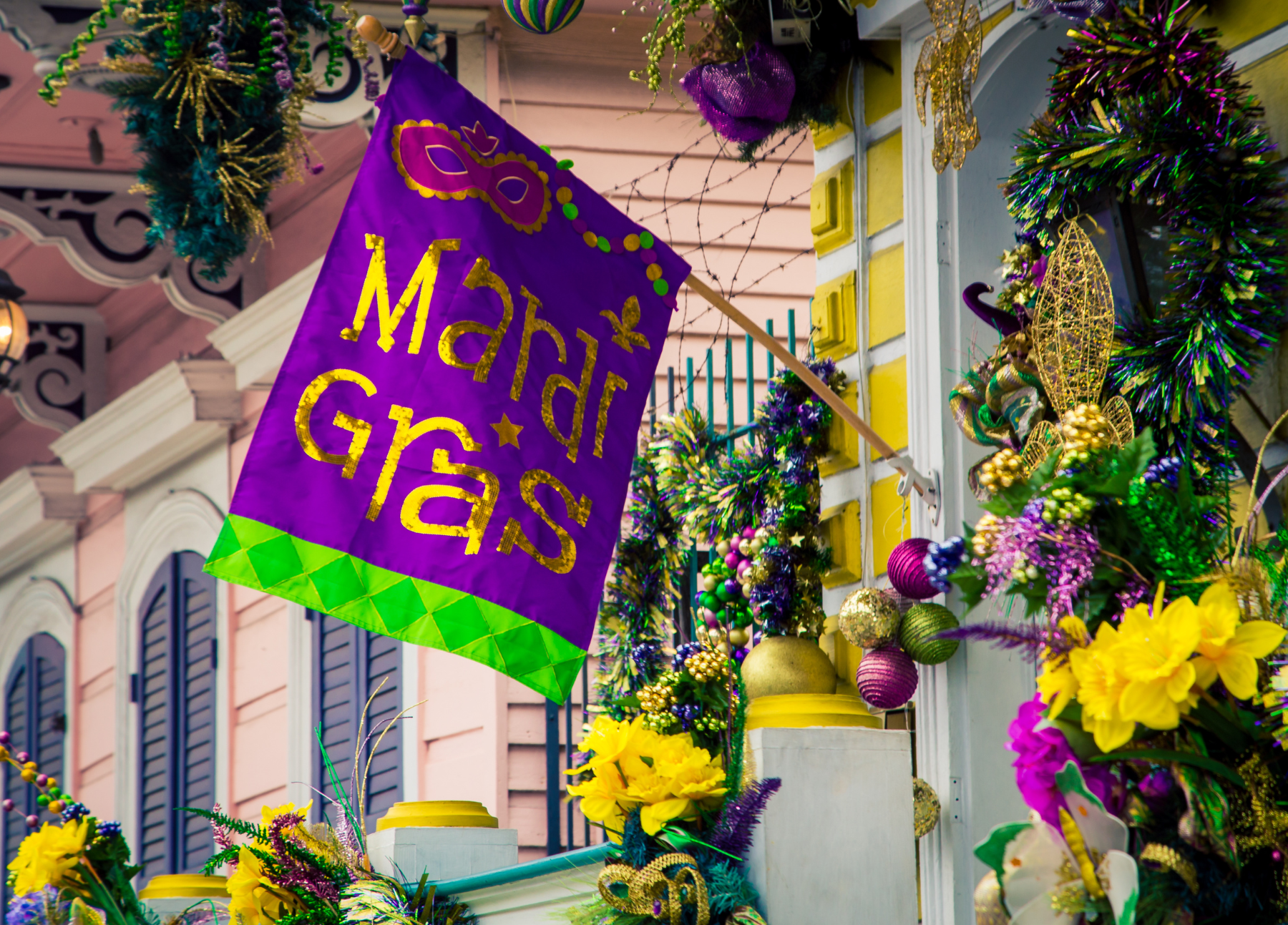
Laissez le Bon Temps Roulez on Mardi Gras!
Published on February 8, 2024
Celebrations for Fat Tuesday, the last day of Carnival season before Lent, have been a part of Catholic cultures for centuries, and arguably the most famous is held in New Orleans.
By Dave Lifton (@daveeatschicago)
Although records from that era are spotty at best, it’s believed that the first Mardi Gras in America was held on March 3rd, 1699. A French-Canadian named Pierre le Moyne, Sieur D’Iberville led an expedition up the Mississippi River and made about 20 miles from the mouth of the river. He celebrated with his crew and named the spot and the bayou after the holiday.
Iberville’s younger brother, Jean-Baptiste Le Moyne, Sieur de Bienville, was part of that journey, and went on to found Mobile, Ala., in 1702 and New Orleans, 70 miles upriver from Bayou Mardi Gras, in 1718. The two cities would become linked, not just through the brothers, but also Mardi Gras.
Mobile’s celebration in 1711 was the first American Mardi Gras with parades and masks. But the arrival of the British in 1763, after France lost the land in the Seven Years’ War, ended the merriment. The parades started again—albeit on New Year’s Eve—in 1830, when Michael Krafft led a group that he dubbed the Cowbellion de Rakin Society, thus giving birth the social clubs known as “mystic societies.” It wasn’t until after the Civil War that the parades were moved back to Mardi Gras.
In 1856, six members of the Cowbellion de Rakin Society who had moved to New Orleans decided to bring that tradition to their new home. They formed the Mistick Krewe of Comus, taking their name from the son of the Greek god Dionysus, a symbol of drunken excess. Their first parade was held on Feb. 24th, 1857, borrowing costumes and horse-drawn floats from their Alabaman counterparts.
Krewes sprung up throughout the city, with membership drawn on economic, racial and gender lines. Black krewes, starting with the Zulus in 1909, came from the social aid and pleasure clubs that have long provided relief to its members. The first all-female krewe was Iris, in 1917, but it wasn’t until 1941 when a parade by an all-female krewe, Venus, was thrown.
This year, approximately 50 krewes will parade in the Crescent City during the season, each with themes that can be celebratory, satirical, or even sometimes obscene. The members, who are usually masked, throw objects to the crowd, most famously the plastic beads and doubloons, but also objects exclusive to the krewe, such as hand-decorated genie lamps, coconuts, and shoes.
Culturally adjacent to, but not part of, the African-American krewes are the Mardi Gras Indians. Their history is murky, but it’s generally acknowledged they emerged as a way of paying tribute to the Native Americans who hid Blacks that escaped enslavement. On Mardi Gras Day, they can be spotted chanting and dancing on the streets, decked out in elaborate, hand-sewn suits with intricate beadwork and images that tell their stories in a blending of West African and Native American traditions.
It wouldn’t be Mardi Gras without the twin pillars of New Orleans culture: food and music. Although Creole/Cajun dishes like gumbo, jambalaya, and red beans & rice are enjoyed year-round, one food is specific to Carnival season. King cake is typically an oval, braided brioche roll decorated with icing and sanding sugar in Mardi Gras colors: purple (for justice), gold (power) , and green (faith). The traditional flavor is cinnamon, but variations include filling the cake with cream cheese, fruit preserves, or pralines. Placed inside the cake is a small plastic baby, and whoever finds the baby is required to provide the king cake at the next party.
As for music, the below playlist consists of 15 Mardi Gras classics. These songs include novelty R&B (“Mardi Gras Mambo”), tales of the Mardi Gras Indians (“Big Chief,” “New Suit,” “Iko Iko”), the official song of the Rex parade (“If Ever I Cease to Love”), depictions of the celebrations (“Carnival Time,” “Street Parade,” “Mardi Gras Day”), and the sacred, traditional song chanted by Indians at the start of their day (“Indian Red”).
Mardi Gras is crucial to New Orleans’ tourism industry. A study released in January 2024 revealed that Carnival season in 2023 directly and indirectly brought in $890 million, and that the city took in $2.64 for every dollar it spent. However, for those born and raised in the Big Easy, the scenes of drunken debauchery in the French Quarter broadcast on national news is not their version of Mardi Gras. For Mark Bologna, the holiday is about faith, family, community, and tradition. In 2015, he launched the Beyond Bourbon Street podcast to change the perception of the city to the rest of the country. As of June 2023, the bi-weekly show has been downloaded more than 1.3 million times.

The Adventure starts when you say it does.
All eATLAS Adventures are designed and built by experienced eATLAS Whoa!Guides. They're always on. Always entertaining. And always ready to go.
Check out our Adventures!